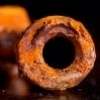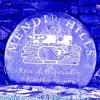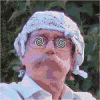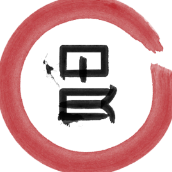Search the Community
Showing results for tags 'stacking'.
-
Hi, I shall start by saying that I am not impressed with this app so far, anyway when trying to grab some exposures to stack from the Photo's app within the iPad Pro 2nd Gen, I end up seeing what looks to be thumbnails scattered around what should be an image? Any reason why this would be happening? I have attached a screen shot, also thanks for any input / advise given by anybody on this.
-
Hey all, I'm really happy to announce that I've just released the first few videos of my passion project, the Shooting Series! What it's about I love photography and video - I'll often go out and shoot specific material for use in the Affinity Photo tutorials to demonstrate certain features, and this has fed into my desire to cover a mixture of well-known and esoteric shooting techniques. It's my goal, then, to produce a video series that looks at all kinds of weird and wonderful photographic techniques - from shooting for stacking (long exposure simulation, noise reduction) to light painting, "big stopper" effects, portrait panoramas, focus stacking landscapes.. the list goes on. I'm constantly gathering material and planning/scripting videos, but I've just put the finishing touches on a few of the videos and felt it was about time to share them. Where applicable, I'll also be providing sample materials to download. Additionally, I've also put accompanying articles up on my website that provide some additional tips and insights. Long Exposure Water - Watch on YouTube - Read article In this video we're looking at the popular technique of using long exposure times to create shots with blurred motion; in this particular case, we're focusing on water. When you shoot water with long exposures, it takes on a smoother, "flowing" and sometimes ethereal appearance. In the video, I cover the use of both variable and fixed Neutral Density filters, as well as square filters with a filter bracket. Burst Stacking - Watch on YouTube - Read article - Download sample images Here we're exploring the use of stacking in post to create a long exposure look from a burst of images. It's a very esoteric technique, but can prove very useful in certain circumstances: you could, for example, find yourself in a situation where you want to achieve a long exposure look to some water, but don't have either a means of stabilisation or any ND filters to cut down the light for a slower shutter speed. I've also provided a ZIP archive with image samples for two of the compositions so you can stack them and see the effect. Big Stopper - Watch on YouTube - Read article - Download sample images In this video we're taking a look at setting up the camera for a "big stopper" effect with landscapes, as well as exploring stacking in post production to both enhance and emulate the effect. Also provided is a ZIP archive with image samples for two of the examples so you can experiment with stacking them. Polarisers - Watch on YouTube - Read article In this short and sweet video we're taking a look at polarisers, examining their benefits and caveats. Portrait Panoramas - Watch on YouTube - Read article Check out how to capture more vertical space in your panoramas by shooting in portrait orientation. --- Hope you find them interesting and useful!
-
.thumb.jpeg.6f143e8223547aba974205ef53397036.jpeg)
affinity photo Recent light painting/astrophotography work
James Ritson posted a topic in Share your work
Hey again, it's been ages since I actually shared some of my work in this forum. Over the course of getting imagery for the tutorials, I've also produced some final pieces that I'm happy with. Recently I've been tackling tutorials for astrophotography/star image editing as well as light painting, so there have been a few late nights! My favourite so far is a light painting composite near my home: Rail Tracks by James Ritson, on Flickr Then a light painting of Rufford Abbey (although I think I narrowly avoided a run-in with security): Rufford Abbey by James Ritson, on Flickr Followed by another light painting composite underneath an old railway bridge. This one's a little scrappy and I'm not sure how I feel about it at the moment: Under The Bridge 01 by James Ritson, on Flickr Moving on, a combination of star photography and light painting at Rufford Lake: Rufford Lake 01 by James Ritson, on Flickr And then a shot of the night sky, which was achieved by stacking 50 images (shot at ISO 6400, 1s long each) and pushing the tones quite severely to produce a vibrant result: Still Sky 01 by James Ritson, on Flickr That's about it for now - some of the above imagery is used in the recent tutorials and I plan to hopefully produce some more videos in the future covering these areas of photography. There are a few more images on my 500px and Flickr accounts as well if you're interested! Thanks, James -
Hi Affinity-Team, I have just downloaded the affinity photo demo (for Windows), watched some tutorials and tried a little bit for myself and have some questions. I like to take photos of starry landscapes like the ones I attached to this post. Now to reduce noise I'd like to stack them for which I am currently using a combination of Hugin for alignment and Image Magick to stack them. I let these tools create two stacked images one of the static foreground and one of the aligned background, after that I currently use Gimp to load both images and take only the sky portion of the aligned and stacked image for the final images sky and the stacked image without aligning for the foreground. I tried to convert this complete workflow to affinity photo using the "New stack" function. Unfortunately the program always aligns the images (I use a stack of 32x20 second exposures) using the trees in the foreground which leads to a blurry sky without any stars visible. Is there a way of alternating this behavior? I thought about (and tried) loading the images as stack, ungroup them, applying a layer mask which leaves only the stars visible and then regroup them using 'Arrange > Live Stack Group', however this doesn't (re-)align my images and the result is the same as when loading the images as stack. Is there any possibility for me to support my workflow in affinity photo, or is anything planned for future releases? Greetings and thanks in advance.
- 9 replies
-
- stacking
- noise reduction
- (and 3 more)
-
I have been doing some testing in stacking pictures I took of the Orion nebula. The pictures are good and the stars are pinpoints. The problem is that I tried all alignment parameters and the result is never aligned. I had high hopes for this function but it doesn't seem to be very good. Stacking is one of the main reasons I bought Affinity Photo, the other being to replace Photoshop Elements. I could always use Deep Sky Stacker but I had great hopes for affinity. I could always try to align manually but that's a lot of work. Anyone has ideas?
-
Hi, All. I am trying to merge some images into an image stack (like for long exposure simulation and noise reduction) and also clone some details from individual images into a final image. It looks like it is working automatically when doing Focus or HDR-stacking - individual images are automatically added to clone sources - but I was not able to figure how to do it in an image stack? Thanks in advance.
-
When you want a picture of a deep sky object like Orion, you normaly have to expose for a long time with a guided telescope. A simpler way is to take many pictures and stack them to add the information from each picture and get a much brighter one. How should I do this in Affinity? I need to add all the pictures to simulate a longer exposure. This is not HDR or focus stacking, just adding data. Thanks.
-
Hi, Here is a collection of observations/requests for focus stacking. 1) Please provide a keyboard shortcut to toggle source preview. In the retouching phase, it can slow things down considerably to move the mouse over to the tiny toggle button to change the view. 2) Similarly, up-down arrows (or similar) to cycle through source images would allow the mouse to stay over the area of interest where the retouching is going on. 3) When changing tools (e.g. from stamp to zoom and back to stamp), the source image pane always reverts to a state where it is scrolled all the way to the top. This is cumbersome when working with large stacks. Please make the state of the pane "sticky." 4) It seems to me that after the initial stacking is done, I can work with the original stacked images but cannot clone from one part of the working image to another, or choose coordinates from which to clone. After I close the image and reopen, I can clone from any coordinates in the working image but no longer have access to the original stacked images. Is this true, or have I missed something? Are there ways to access the alternate sources? I would like to be able to mix and match these operations. Thanks! Peter
-
I know that there are 2 ways of producing the input files for a macro focus stack i) a small refocus between images ii) using a focus rail to move the camera between photos. From what I understand refocusing between photos is much easier for the stacking software to deal with but a focus rail gives more control. From the forum and the tutorials I couldn't see whether the new feature can merge a stack created using a focus rail. Has anyone tried this?
-
I'm thinking of stacking several astrophotos with foregrounds and to do it I'll guess I will need to mask the foreground to get clean and sharp stars. Is it possible to do one mask in one layer and then copy it to all of the other layers?
- 1 reply
-
- Stacking
- Astrophotography
-
(and 1 more)
Tagged with:
-
I can't see another thread that mentions this problem, so here goes. I've been playing with stacking photos, which looks to be a very useful tool, as well as great fun. But if I try to change the stacking method without expanding the stack ... ... Photo crashes with this Windows error: When Photo restarts it gives this message: If I expand the stack before changing the stacking method, everything is fine. I take it from the messages that the details have been sent to you, but I thought I'd put my two-penn'orth in anyway. I'm running Windows 7 on a Toshiba Satellite laptop.
-
The focus stacking is great: - Question: Can I use New Stack > Live Alignment > focus merge? I can't seem to focus merge a live group. If not then: - Feature request: Live alignment option for focus stack. QoL: Adjustment sliders: - Question: How do you reset an individual slider quickly, rather than the whole panel? - Feature request: Double clicking the slider header (lightroom) or right clicking the up/down arrows on the number entry box (3DSMax) resets the slider/number entry to default. Detail Refinement in the Develop Module: - This is sharpening, right? - Feature request: Unsharp mask/threshold for sharpening. Without this it's mostly useless on any photo that has blurred and sharp areas (dof/panning/etc). QoL: After selecting a menu with drop down options you can't transverse the options in the menu with the up and down arrow keys. Eg. Blend mode drop down menu. The Export Module: I understand the use of slices for advanced users, but most people just want a nice big simple export button. It should probably default to the slices pane rather than the layers pane when entering the export module and the export all slices button might need to be a bit more obvious. Just a few thoughts, feel free to disregard.
-
Hi there, I'm having an issue to open a stack of Sony RAW files (.ARW by an A7 Mark II - is on the supported device list) to merge exposures. I attached a screenshot of the result. Same appeared when I first simply was opening .ARW files. This was solved by switching the RAW Engine to Apple. Yay! But I am still facing the problem when opening as a stack! Any help is highly appreciated - thank you! Cheers, André
-
Stacking Object Removal is already an amazing function in Affinity Photo. For complex objects in front it would be an extremely advantage, to have also the opposite. A demo what I mean shown with a not so complex object: 1. Background 2. Background and Object 3. After AP enhanced by new feature "Stacking Background Removal": Add this and PS is doomed. ;) Best regards, Roland
-
- Stacking
- Object Removal
-
(and 2 more)
Tagged with:
-
Tackle down object in foreground (the lamp) by stacking works fine. With only two pictures, the bike light has almost completely been removed. Hot to do the opposite? I tried 1000 things, but now I am running out of ideas. Pictures are originally raw, but size is to big to upload here. The result is not as perfect with the jpg's, but still ok. Foreground: Background: The pictures are shot on tripod, so for stacking no Auto nor Live are necessary: Any suggestions, how I can remove the BACKground with stacking? Any help appreciated! :) Cheers, Roland
- 2 replies
-
- Foreground
- Knock off
-
(and 2 more)
Tagged with:
-
I do product photography and focus bracketing or stacking is a must, a fully needed to be able to replace Photoshop. In the other hand color and sharpening needs a big improvement.
-
- bracketing
- focus
-
(and 2 more)
Tagged with:
-
Hello. if you haven't already tried the new stacking option in AP 1.4.....you really should. I have been trying out object removal, stacking a number of photos to remove any moving objects. I'm not going to go into the in's and out's here, do yourself a favour and watch the tutorial here The example below is of the BMW Welt in Munich and made up of 13 handheld shots. The second photo is the stack without any object removal to give you an idea how effective this tool is. Have fun trying it out. Joe
-
When I do burst mode photo with my iPhone, this is visible as stack of pictures in Apple Photos. Could you implement an extension that allows using this Apple Photo stack directly with the Affinity Stacking feature? All stacking features would then be perfectly usable via Affinity Photo Extension. Best regards BlauerClaus
-
When I load 14 jpeg files into a stack, each about 2.5 MB size, and save this, the overall .aphoto file has a size of about 500 MB. Please implement to not enfold each picture internally, but just link the original files and re-enfold them with loading the files again. This may take more time, but significantly reduces file size. 500MB for a project is too big, especially in combination with iCloud and iPad. Best regards BlauerClaus
-
Please implement a "Copy EXIF" and "Paste EXIF" feature, so that the user can manually transfer EXIF header information from one picture to another. Use case 1: noise reduction via stacking. The user makes multiple photos of the same situation and loads them as a stack into Affinity Photo. Affinity Photos does the noise reduction. But after exporting the result, the final jpg has no EXIF information. The use can hence decide from which of the pictures he want to re-use the EXIF information and can paste it into the result. Use case 2: Export Persona: you may export multiple parts of the same image. However, they are all made at the same day, time, camera etc. In both use cases, the resulting pictures have no EXIF information. This feature universally helps to close this gap. Best regards BlauerClaus
- 2 replies
-
- EXIF
- Export Persona
-
(and 1 more)
Tagged with:
-
Hello, In doing astrophotography, these two features are really essential. I really love using AP for editing, but it becomes nearly impossible to with astrophotography because it's missing these two features. Especially because AP has features like LAB, it could be a really great tool potentially - and I don't think (at least the median mode) is very difficult to implement. They're useful for stacking photos - when taking pictures of the night sky without a tracker, you're limited in the exposure length you can use, because the Earth is rotating. To get a useful picture, you really need an exposure with at least ISO 3200, making very noisy images. The solution is to take multiple pictures and align them in post, and then use a median filter to remove the noise (which is incredibly effective). It's useful for other things as well - basically any noise reduction. There are perfectly clear stacks of images taken at ISO 25,600 or higher - and the median filter can get rid of people walking in front of a landscape, for example. My point is, these are really useful features for everyone and could add a lot to the abilities of AP and make it a very appealing software for another group of photographers.
- 7 replies
-
- astrophotography
- stars
-
(and 8 more)
Tagged with:























